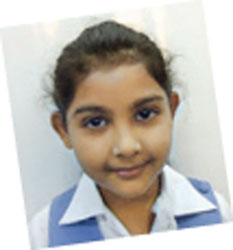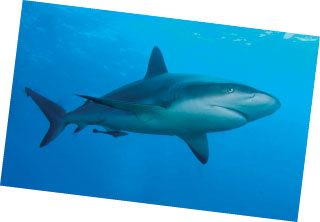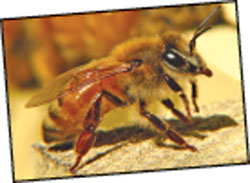News around the world
 A Lankan child in Oman invited to UN A Lankan child in Oman invited to UN
Students learning citizenship studies in Sri Lankan School, Muscat in
Oman took part in the international program 'Friend Our World' with the
guidance of the principal Somabandhu Kodikara and the citizenship
teacher Anjalie Silva.
Friend Our World is a peace program for schools organised by Skoolbo
in collaboration with Peace one day, Microsoft, Skype in the classroom
and Clubhouse news with a focus on the international day of peace on
September 21. Children from more than 130 countries joined Friend Our
World in 2013. Four of the students Mohamed Tariq Faqir, Amrin Anna
Haleem, Rozen Talawinna and Muzaffar Ahmed were among the best achievers
in the world in the online competition associated with this program.
Amrin Anna Haleem, a student of Sri Lankan School in Muscat has been
selected by 'Friend Our World' to visit the United Nation Headquarters
this month as one of the ten student representatives worldwide. She
brought international glory to the school by being the first child ever
to visit the UN from the school.
Amrin Haleem in year 4 has been selected to visit the UN headquarters
left for Oman on March 18.
 Great white Shark first to cross Atlantic? Great white Shark first to cross Atlantic?
A 2,000-pound great white shark named Lydia is set to become the
first of her kind to cross the Atlantic ocean. Lydia was tagged with a
satellite tag off the coast of Jacksonville, Florida in March 2013 as a
part of a non-profit ocean research project called Ocearch. Since then
she has traveled 4,800 kilometres (3,000 miles) from where she was
tagged, and is about 1,600 kilometres (1,000 miles) away from County
Cork in Ireland.
"No white sharks have crossed from west to east or east to west,"
said Gregory Skomal, senior fisheries biologist with the Massachusetts
Marine Fisheries. "We thought based on some of our earlier data that
[great whites] were much more coast ally restricted," Skomal added. "And
a couple of sharks like Lydia ... are demonstrating some broader
movement, and we're surprised. But I suppose we really shouldn't be
because we don't really know that much about the species to begin with."
Lydia is technically closer to Europe than North America, but she won't
officially cross the Atlantic until she crosses the mid-Atlantic ridge,
the rough boundary line between the eastern and western ends of the
ocean. If Lydia does cross the mid-Atlantic ridge she will be the first
documented white shark to travel across the pond!
 Wake up and smell the bacon! Wake up and smell the bacon!
Who doesn't love waking up to the smell of bacon? "Bacon experts"
behind the "Wake Up and Smell the Bacon" app do and they want to make it
possible to wake up to fresh bacon being cooked without having to even
get out of bed.
The "Smell the Bacon" app is developed by Oscar Mayer. It is an alarm
clock that wakes users up to the sound of crackling bacon. A select few
app users will be able to test a plug-in scent diffuser that puffs out
the smell of bacon at the same time! To obtain the plug-in, users have
to go to wakeupandsmellthebacon.com and fill out a quick quiz and hope
they will be selected to test it out. This is the only way to get hold
of the plug-in as it is not for sale. The plug-in is plugged into the
headphone jack and when a user's alarm goes off, the app will begin
making crackling bacon noises and puff out a cloud of simulated bacon
smell.
Bees trained to sniff out cancer
 It has been proven that honeybees are very smart. They've been
trained to detect land mines and distinguish fine art; now they're being
trained to detect cancer! Along with being smart, honeybees have a very
sensitive sense of smell. They don't have noses like most animals, but
they can "smell" with their tongues, antennae, and feet! They can also
be trained to do a little dance when they detect a smell they have been
trained to associate with food. With these facts in mind, Portuguese
scientist Susana Soares created a two-chambered glass bubble that a
person can breathe into. It has been proven that honeybees are very smart. They've been
trained to detect land mines and distinguish fine art; now they're being
trained to detect cancer! Along with being smart, honeybees have a very
sensitive sense of smell. They don't have noses like most animals, but
they can "smell" with their tongues, antennae, and feet! They can also
be trained to do a little dance when they detect a smell they have been
trained to associate with food. With these facts in mind, Portuguese
scientist Susana Soares created a two-chambered glass bubble that a
person can breathe into.
Then, the bees inside the bubble smell the person's breath and will
do their little dance if they can smell cancer! The bees are put inside
the larger bubble and they fly into the smaller tube inside of the large
bubble if they smell the smell they've been trained to detect.
She trains them by exposing them to the odour molecules of a certain
illness, and then feeding them sugar so they learn to associate a
certain smell with delicious sugar! Soares says she can also train bees
to detect other diseases like early onset tuberculosis and diabetes in
only 10 minutes.
She says that her glass bubble is an inexpensive and very accurate
way of diagnosing illness, but entomologist Richard Pollack of Identify
Us in Boston isn't sure how accurate Soares' device and her methods are. |

